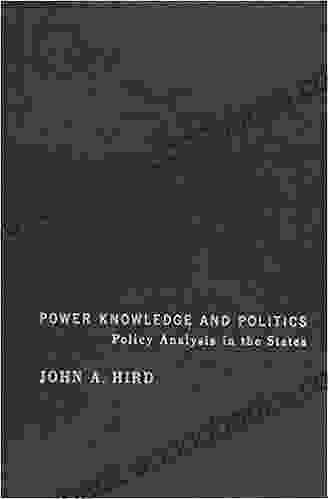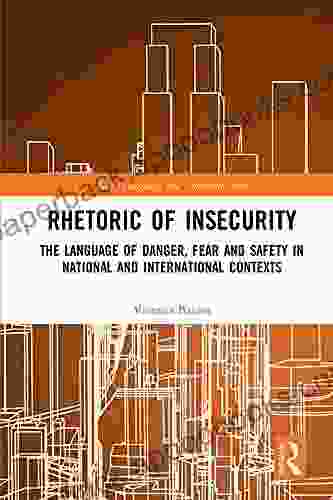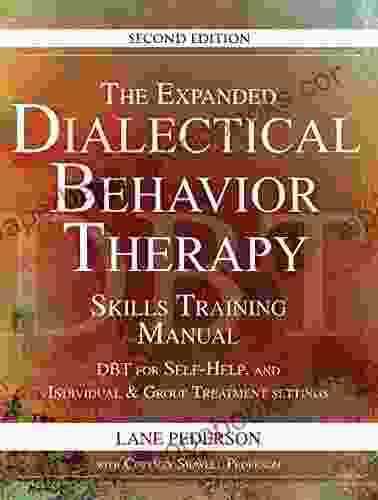Unveiling the Language of Danger, Fear, and Safety: Exploring National and International Contexts

Language, the intricate web of words and grammar, serves not only as a medium of communication but also as a mirror reflecting the innermost emotions and perceptions of human beings. In the realm of danger, fear, and safety, language plays a pivotal role in shaping our understanding and experiences of these fundamental aspects of human existence.
4.3 out of 5
| Language | : | English |
| File size | : | 3338 KB |
| Text-to-Speech | : | Enabled |
| Word Wise | : | Enabled |
| Print length | : | 281 pages |
The forthcoming book, "The Language of Danger, Fear, and Safety in National and International Contexts," embarks on an enthralling journey into the linguistic landscapes of these powerful emotions. This meticulously crafted work delves into the ways in which different languages and cultures express and interpret danger, fear, and safety, revealing the profound impact of these linguistic variations on our perception and response to these emotions.
The Linguistic Tapestry of Danger
Danger, an ever-present reality in our lives, evokes a myriad of emotions and responses. The language we use to describe and communicate danger varies significantly across cultures, reflecting the unique ways in which different societies perceive and manage threats.
For instance, in some cultures, danger is often expressed through metaphorical language, employing vivid imagery to convey the severity and nature of the threat. In other cultures, danger is described in more direct and concrete terms, emphasizing the immediate and tangible nature of the risk.
These linguistic differences not only shape how we perceive danger but also influence our decision-making and behavior in the face of threats. By understanding the linguistic nuances of danger across cultures, we gain valuable insights into the diverse ways in which human beings cope with and respond to danger.
Unraveling the Language of Fear
Fear, an emotion deeply intertwined with danger, finds its unique expression in the language of different cultures. The words we use to describe fear, the intensity with which we express it, and the strategies we employ to cope with it vary significantly across societies.
In some cultures, fear is openly acknowledged and discussed, with a rich vocabulary of words used to describe its various shades and manifestations. In other cultures, fear is often suppressed or concealed, leading to the use of euphemisms or indirect language to express it.
These linguistic variations reflect the different ways in which fear is perceived and managed in different societies. By examining the language of fear across cultures, we gain a deeper understanding of the cultural factors that shape our emotional responses and coping mechanisms.
Exploring the Language of Safety
Safety, the antithesis of danger, is an essential component of human well-being. The language we use to describe and promote safety also varies across cultures, influencing the ways in which we create and maintain safe environments.
In some cultures, safety is emphasized through language that conveys a sense of security and protection. Safety regulations, for example, are often expressed in clear and unambiguous terms, leaving little room for misinterpretation or ambiguity.
In other cultures, safety is promoted through a more indirect and subtle approach, relying on social norms and community values to create a shared understanding of what constitutes safe behavior. These linguistic variations reflect the diverse ways in which safety is perceived and prioritized in different societies.
National and International Contexts
The language of danger, fear, and safety is not only influenced by cultural factors but also by the broader national and international contexts in which it is used. National policies, international agreements, and global events can all shape the linguistic landscape of these emotions.
For example, during wartime, the language of danger and fear often becomes more prevalent, with governments and media using strong and emotive language to convey the severity of the threat and mobilize public support. Similarly, international agreements and treaties can influence the language of safety, establishing common standards and protocols for promoting safety across bFree Downloads.
Cross-Cultural Communication and Understanding
In an increasingly interconnected world, cross-cultural communication is essential for fostering understanding and cooperation. However, the linguistic differences in the language of danger, fear, and safety can pose challenges to effective communication across cultural boundaries.
By understanding the linguistic nuances of these emotions in different cultures, we can bridge communication gaps and build trust. This is particularly important in fields such as international diplomacy, humanitarian aid, and conflict resolution, where the ability to convey and interpret emotions accurately is crucial for successful outcomes.
"The Language of Danger, Fear, and Safety in National and International Contexts" offers a comprehensive and thought-provoking exploration of the linguistic tapestry of these fundamental human emotions. Through a meticulous analysis of the ways in which different languages and cultures express and interpret danger, fear, and safety, this book provides valuable insights into the profound impact of language on our perception and response to these emotions.
By delving into the national and international contexts that shape the language of these emotions, this book contributes to our understanding of the diverse ways in which human beings experience and manage danger, fear, and safety. It is a must-read for scholars, policymakers, practitioners, and anyone interested in the fascinating interplay between language and human emotions.
4.3 out of 5
| Language | : | English |
| File size | : | 3338 KB |
| Text-to-Speech | : | Enabled |
| Word Wise | : | Enabled |
| Print length | : | 281 pages |
Do you want to contribute by writing guest posts on this blog?
Please contact us and send us a resume of previous articles that you have written.
 Book
Book Novel
Novel Page
Page Chapter
Chapter Text
Text Story
Story Genre
Genre Reader
Reader Library
Library Paperback
Paperback E-book
E-book Magazine
Magazine Newspaper
Newspaper Paragraph
Paragraph Sentence
Sentence Bookmark
Bookmark Shelf
Shelf Glossary
Glossary Bibliography
Bibliography Foreword
Foreword Preface
Preface Synopsis
Synopsis Annotation
Annotation Footnote
Footnote Manuscript
Manuscript Scroll
Scroll Codex
Codex Tome
Tome Bestseller
Bestseller Classics
Classics Library card
Library card Narrative
Narrative Biography
Biography Autobiography
Autobiography Memoir
Memoir Reference
Reference Encyclopedia
Encyclopedia L J Trafford
L J Trafford Nancy Mckenzie
Nancy Mckenzie Luke Rosiak
Luke Rosiak Peter G Northouse
Peter G Northouse Jennie Rooney
Jennie Rooney Suzu Takamine
Suzu Takamine Jim O Neil
Jim O Neil Pam Weaver
Pam Weaver Jim Northrup
Jim Northrup Timothy Callender
Timothy Callender Joe Newman
Joe Newman T K Wrathbone
T K Wrathbone Jeff Wheeler
Jeff Wheeler Joel Rudinow
Joel Rudinow Jenna Cooke
Jenna Cooke Mary S Frederick
Mary S Frederick Michelle Warren
Michelle Warren Jennifer L Wright
Jennifer L Wright Jerome W Sheridan
Jerome W Sheridan Jenna Blum
Jenna Blum
Light bulbAdvertise smarter! Our strategic ad space ensures maximum exposure. Reserve your spot today!

 Henry Wadsworth LongfellowUnveiling the Heartbreaking Story of The Suitcase Kid: A Profound Exploration...
Henry Wadsworth LongfellowUnveiling the Heartbreaking Story of The Suitcase Kid: A Profound Exploration... Fredrick CoxFollow ·8.8k
Fredrick CoxFollow ·8.8k Devin RossFollow ·13.6k
Devin RossFollow ·13.6k Jarrett BlairFollow ·13k
Jarrett BlairFollow ·13k Brett SimmonsFollow ·14.6k
Brett SimmonsFollow ·14.6k Boris PasternakFollow ·18.5k
Boris PasternakFollow ·18.5k Alex ReedFollow ·6.3k
Alex ReedFollow ·6.3k Forrest ReedFollow ·19.2k
Forrest ReedFollow ·19.2k Rod WardFollow ·11.5k
Rod WardFollow ·11.5k

 Preston Simmons
Preston SimmonsEmbark on a Literary Odyssey with "Walking on Water": A...
Prepare to be swept...

 Ernesto Sabato
Ernesto SabatoUnlocking Policy Analysis: Dive into the Intricacies of...
: The Realm of Policy...

 Forrest Reed
Forrest ReedThe Road to Grace Walk: A Journey of Spiritual Growth and...
In the tapestry of life, we...

 Evan Simmons
Evan SimmonsTip Neill and the Democratic Century: A Political Odyssey...
The Rise of a Political Giant In the...

 Mark Mitchell
Mark MitchellUnwrap the Magic: A Review of Christmas Memory by Richard...
As the cold winter months draw near, and...

 Percy Bysshe Shelley
Percy Bysshe ShelleyBeyond the Veil: Delve into the Realm of Spirit with In...
Unveiling the Mysteries of the Unseen...
4.3 out of 5
| Language | : | English |
| File size | : | 3338 KB |
| Text-to-Speech | : | Enabled |
| Word Wise | : | Enabled |
| Print length | : | 281 pages |










